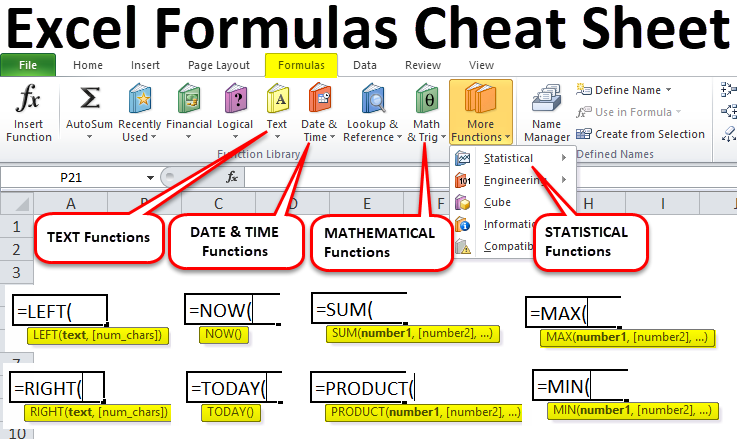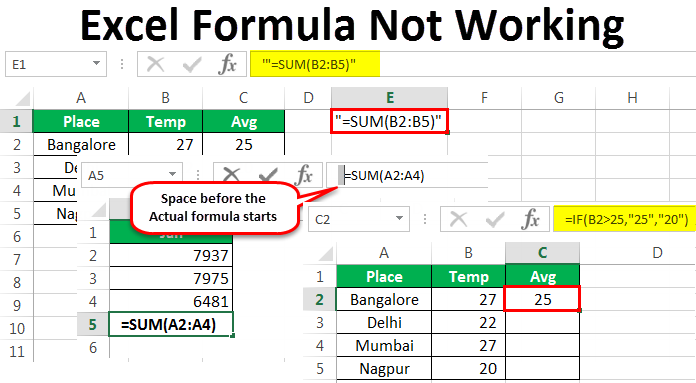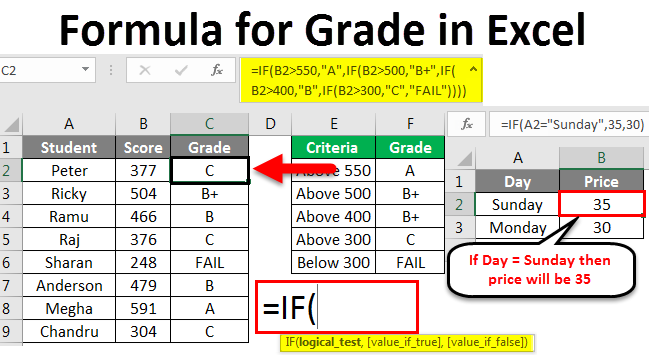
Everything about Excel If Formula
Obtain begun on how to develop formulas as well as utilize built-in functions to perform calculations and solve troubles. Crucial: The determined outcomes of solutions and some Excel worksheet features may vary somewhat between a Windows COMPUTER utilizing x 86 or x 86-64 design and also a Windows RT COMPUTER using ARM architecture.
Select a cell. Type the equal indication =. Keep in mind: Solutions in Excel always begin with the equivalent indicator. Select a cell or kind its address in the picked cell. Enter an operator. As an example,-- for subtraction. Select the next cell, or type its address in the picked cell. Press Enter.
When a formula is entered into a cell, it additionally appears in the Formula bar. To see a formula, pick a cell, as well as it will appear in the formula bar. Select an empty cell. Type an equivalent indicator = and after that type a feature. For instance, =AMOUNT for getting the total sales.
Select the variety of cells, and after that kind a closing parenthesis). Press Enter to obtain the result. We have actually created a Get started with Solutions workbook that you can download. If you're brand-new to Excel, and even if you have some experience with it, you can go through Excel's most usual solutions in this tour.
You can browse via the specific areas listed below to discover even more regarding details formula elements. A formula can likewise contain any or every one of the following: features, references, operators, as well as constants. Parts of a formula 1. Features: The PI() function returns the worth of pi: 3.142 ...
How Excel If Formula can Save You Time, Stress, and Money.
References: A 2 returns the worth in cell A 2. 3. Constants: Numbers or message worths went into straight into a formula, such as 2. 4. Operators: The ^ (caret) driver increases a number to a power, and the * (asterisk) driver multiplies numbers. A continuous is a value that is not determined; it constantly stays the exact same.
An expression or a worth arising from an expression is not a constant. If you make use of constants in a formula rather than recommendations to cells (for example, =30 +70 +110), the outcome modifications just if you change the formula. As a whole, it's ideal to put constants in private cells where they can be quickly altered if required, then reference those cells in formulas.

You can make use of references to make use of data consisted of in different parts of a worksheet in one formula or make use of the value from one cell in numerous solutions. You can additionally describe cells on various other sheets in the very same workbook, and to other workbooks. Recommendations to cells in various other workbooks are called web links or outside referrals.
These letters and numbers are called row and also column headings. To refer to a cell, enter the column letter complied with by the row number. As an example, B 2 describes the cell at the crossway of column B and also row 2. To refer to Use The cell in column An and row 10 A 10 The variety of cells in column An and rows 10 through 20 A 10: A 20 The range of cells in row 15 and columns B via E B 15: E 15 All cells in row 5 5:5 All cells in rows 5 via 10 5:10 All cells in column H H: H All cells in columns H via J H: J The series of cells in columns A through E and also rows 10 through 20 A 10: E 20 Making a referral to a cell or a variety of cells on another worksheet in the same workbook In the following example, the AVERAGE feature computes the typical value for the variety B 1: B 10 on the worksheet named Marketing in the very same workbook.

Describes the worksheet named Advertising and marketing 2. Refers to the array of cells from B 1 to B 10 3. The exclamation factor (!) Divides the worksheet referral from the cell range reference Note: If the referenced worksheet has areas or numbers in it, after that you need to add apostrophes (') prior to and after the worksheet name, like =' 123'! A 1 or =' January Income'! A 1.

All About Excel If Formula
If the position of the cell which contains the formula modifications, the recommendation is transformed. If you duplicate or fill the formula throughout rows or down columns, the reference immediately readjusts. By default, new formulas use relative referrals. For example, if you replicate or fill up a family member reference in cell B 2 to cell B 3, it instantly readjusts from =A 1 to =A 2.
If the setting of the cell which contains the formula changes, the absolute reference stays the exact same. If you replicate or fill the formula across rows or down columns, the outright referral does not adjust. By default, new formulas utilize loved one references, so you may require to change them to outright references.
Replicated formula with absolute referral Mixed recommendations A mixed reference has either an absolute column and also loved one row, or outright row and loved one column. An outright column reference takes the form $A 1, $B 1, as well as so on. An outright row reference takes the kind A$ 1, B$ 1, and so forth.
If you duplicate or load the formula across rows or down columns, the relative recommendation immediately changes, and the outright referral does not change. For instance, if you copy or fill a mixed recommendation from cell A 2 to B 3, it readjusts from =A$ 1 to =B$ 1. Copied formula with blended referral The 3-D recommendation style Conveniently referencing several worksheets If you intend to evaluate information in the same cell or series of cells on numerous worksheets within a workbook, make use of a 3-D recommendation.